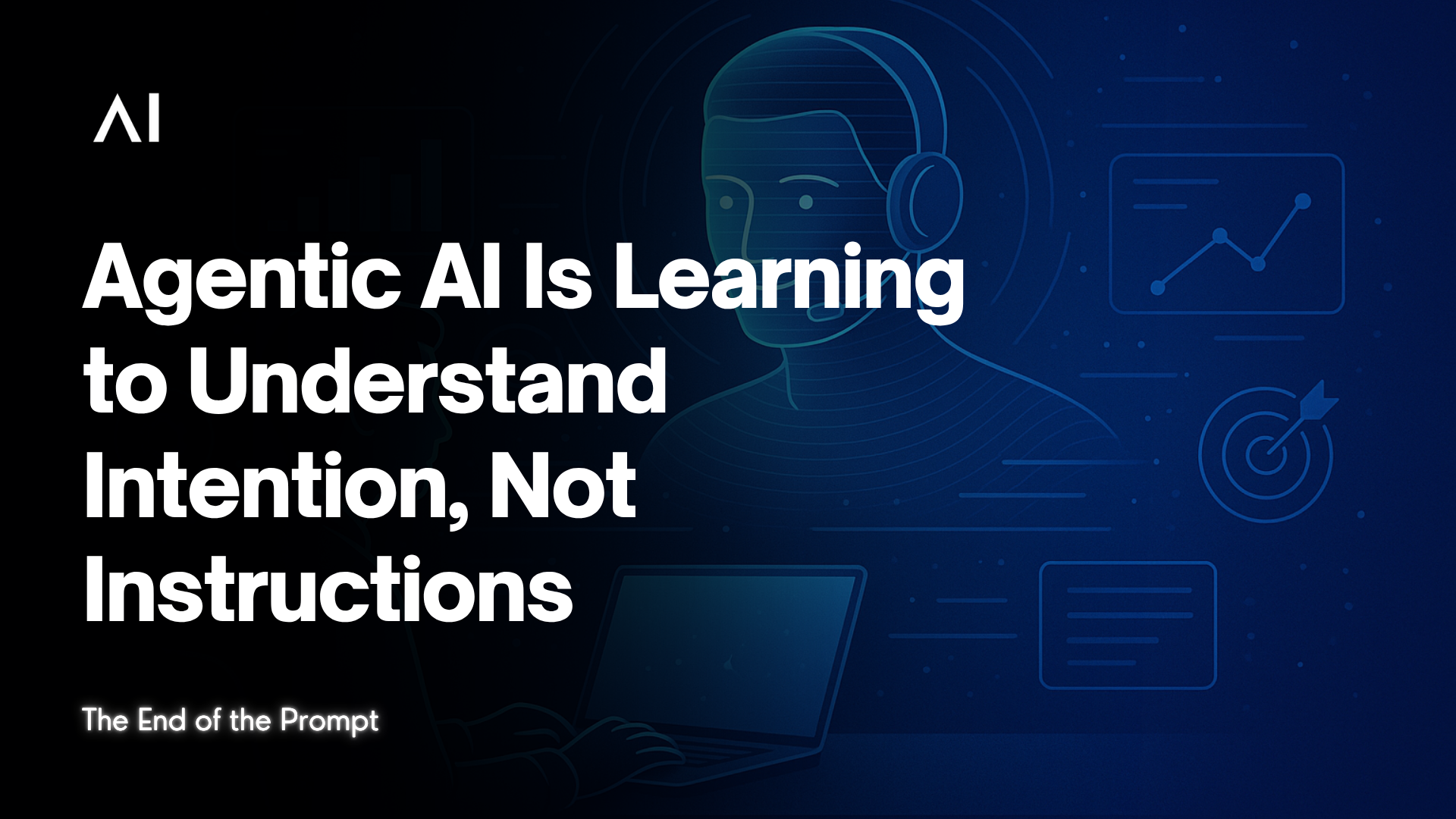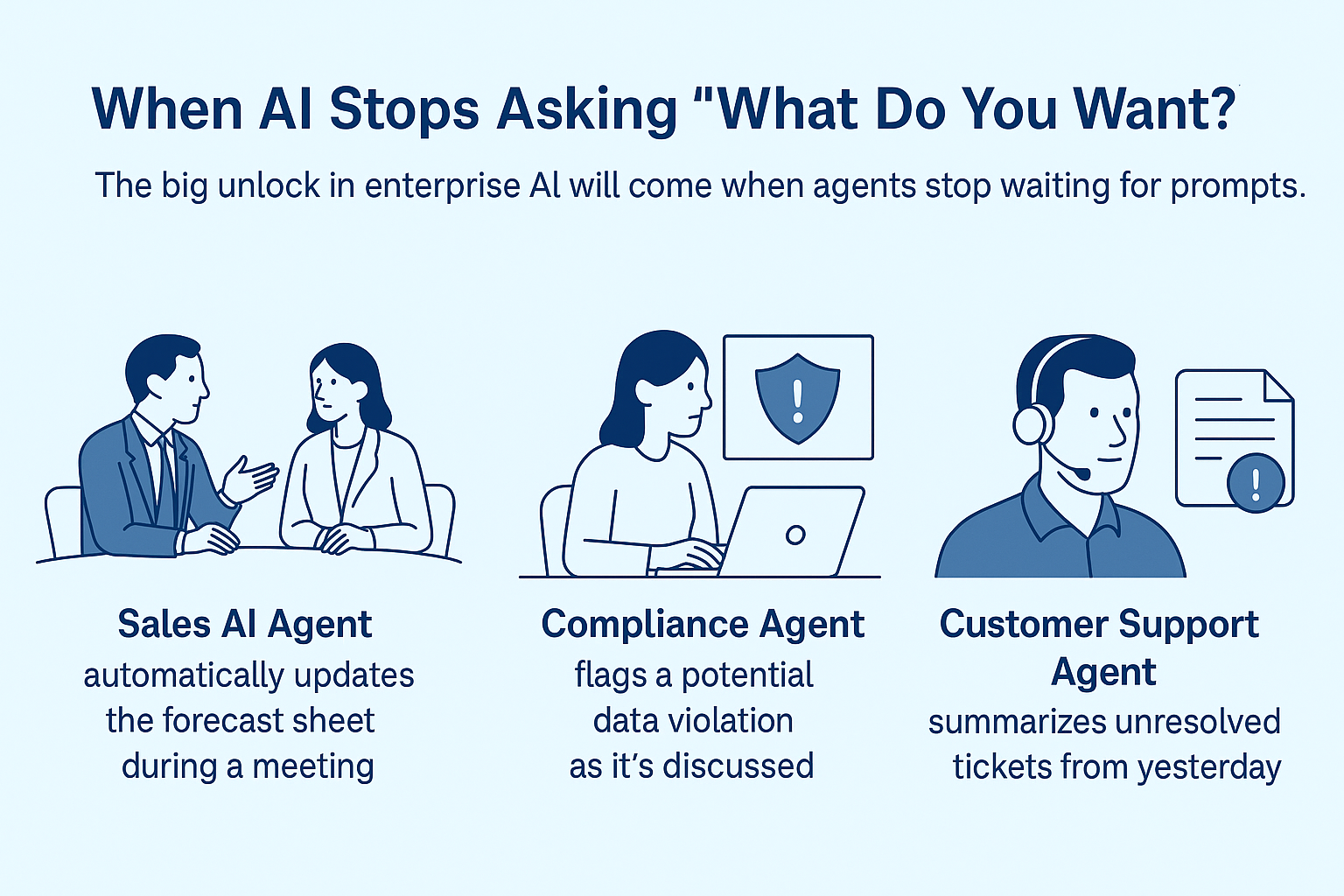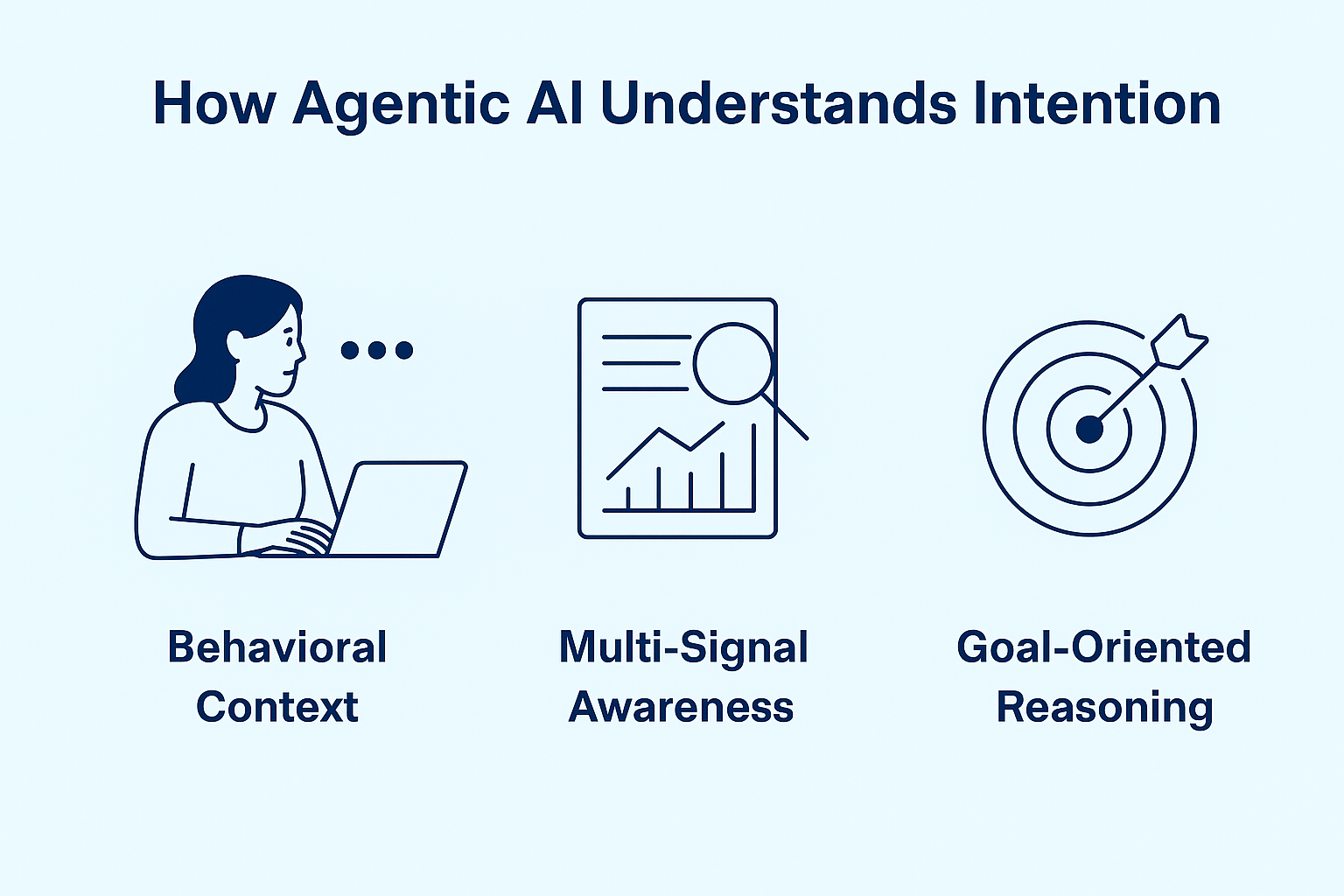Join our WhatsApp Community
AI-powered WhatsApp community for insights, support, and real-time collaboration.
AI is moving beyond prompts. Agentic AI now understands goals, context, and behavior—turning reactive chat models into proactive teammates that act on intent.

| Why is AI important in the banking sector? | The shift from traditional in-person banking to online and mobile platforms has increased customer demand for instant, personalized service. |
| AI Virtual Assistants in Focus: | Banks are investing in AI-driven virtual assistants to create hyper-personalised, real-time solutions that improve customer experiences. |
| What is the top challenge of using AI in banking? | Inefficiencies like higher Average Handling Time (AHT), lack of real-time data, and limited personalization hinder existing customer service strategies. |
| Limits of Traditional Automation: | Automated systems need more nuanced queries, making them less effective for high-value customers with complex needs. |
| What are the benefits of AI chatbots in Banking? | AI virtual assistants enhance efficiency, reduce operational costs, and empower CSRs by handling repetitive tasks and offering personalized interactions. |
| Future Outlook of AI-enabled Virtual Assistants: | AI will transform the role of CSRs into more strategic, relationship-focused positions while continuing to elevate the customer experience in banking. |
Let’s be honest — prompt engineering became popular because AI wasn’t smart enough to get us yet.
We learned to speak in ways machines understood: give context, specify tone, provide examples, add constraints.
It worked — to an extent.
But prompting is like talking to someone who barely remembers your last sentence. You have to repeat context, structure your question perfectly, and hope the answer lands somewhere close.
The truth is, the human brain doesn’t work that way. We don’t “prompt” each other — we communicate through intent, tone, shared history, and unspoken cues. And that’s exactly where AI is heading next.
Here’s the thing: the future of AI isn’t about typing smarter questions. It’s about AI reading between the lines.
That shift is powered by three core advances — memory, reasoning, and context persistence.
Current LLMs are brilliant — but forgetful. Once a chat ends, the slate is wiped clean.
Agentic AI flips this. It keeps a working memory of what’s been said, what’s been done, and what you care about.
Example:
Instead of you typing,
“Summarize the last five customer complaints and make a report for the CX head,”
you could just say,
“Can you update the CX summary we discussed yesterday?”
The agent recalls your prior interaction, understands the task, and executes — no detailed prompt required.
Prompt-based systems are literal.
Say “write a report,” and it writes one — even if the context is missing or contradictory.
Agentic systems reason like teammates. They fill in gaps, question assumptions, and make logical jumps.
If you ask,
“Can we increase customer satisfaction without adding staff?”
a reasoning-driven agent doesn’t just spit out generic advice. It simulates possible actions, cross-references data, and proposes workflow changes — thinking, not parroting.
The best part of the post-prompt world?
AI that lives with your work — in your CRM, documents, emails, and dashboards — not just in a chat window.
It knows your objectives, your team’s priorities, and your organization’s language.
That means no more “Explain this in the context of my business” prompts — because it already knows your business.
For years, AI users were told to “engineer better prompts.”
Now, the focus is shifting to designing for intention — creating systems that understand why someone asks for something, not just what they asked for.
Let’s break that down:
The interface of the future isn’t a chat box — it’s an ecosystem where AI is quietly listening, learning, and anticipating.
For more on how Agentic AI is restoring focus, clarity, and real ROI inside enterprises, you can explore this breakdown on Agentic AI’s impact on productivity.
The big unlock in enterprise AI will come when agents stop waiting for prompts.
Imagine this:
You’re in a meeting, and your sales AI agent automatically updates the forecast sheet based on the conversation.
Your compliance agent flags a potential data privacy issue the moment it hears a policy violation being discussed.
Your customer support agent summarizes yesterday’s unresolved tickets — before you even open the dashboard.
This is what happens when AI understands intention.
It doesn’t wait for you to say, “Please generate a summary.” It recognizes the pattern, recalls the context, and acts.

Understanding intention isn’t magic — it’s system design.
Here’s what’s under the hood:
Agents track how you typically work:
Over time, they predict your next action. Not in a creepy way — in the way a good assistant does.
Intent isn’t always in the text. It’s in timing, frequency, and sequence.
Example: If you open the “Customer Retention” dashboard after a bad quarter, your AI doesn’t need you to prompt it for insights — it can infer your intent to investigate churn drivers.
Traditional AI systems execute commands. Agentic systems evaluate goals.
If your goal is to “reduce response times,” the agent can decide between automating FAQs, retraining staff, or reallocating workloads — based on reasoning across data sources.
Yes — this shift also kills the art of prompt engineering.
But it creates something far more strategic: AI Intent Design.
These are people who architect cognitive flows — teaching AI what to prioritize, when to act, and how to interpret unspoken goals.
Think of it as designing thought processes instead of word patterns.
The skillset moves from “crafting prompts” to “training behavior”:
It’s not linguistics anymore — it’s cognitive design.
When intention replaces instruction, AI stops being a tool and starts being a teammate.
In enterprise environments, this changes everything:
It’s not about automating clicks; it’s about automating decisions.
Your finance agent can detect inconsistencies in expense reports without being told.
Your HR agent can draft pulse surveys when employee sentiment drops.
Agents coordinate. The sales agent alerts the supply-chain agent before stockouts. The marketing agent generates campaigns that align with real-time CRM trends.
No prompts. Just intelligent collaboration.
It’s the same idea behind Autonomous AI Agents becoming the enterprise shield — agents that work continuously, anticipate risks, and protect the organization without needing human nudges.
No more “try this better prompt.”
People simply state goals — and AI figures out how to get there.
That’s when adoption skyrockets. AI stops feeling like extra work and starts working for you.
Understanding intention might look magical from the outside, but it’s built on tangible systems.
Agents learn how you work — your timing, tone, and preferences.
They know which reports you like on Mondays, which dashboards you check after meetings, and which data you usually ignore.
Over time, they start predicting what you’ll need — not guessing, but reasoning from patterns.
Intent isn’t just in text — it’s in patterns.
Open your “Churn Report” three times in one day and your agent knows you’re investigating customer loss.
No need to say, “Give me insights on churn.” It’s already preparing them.
Old AI: “Do what I say.”
New AI: “Understand what I’m trying to achieve.”
If your goal is “reduce customer wait times,” an agentic system doesn’t just spit out strategies. It reviews live call data, finds bottlenecks, and simulates interventions.
It’s goal-first, not command-first.

Yes — this evolution makes prompt engineering less relevant.
But it opens up something much bigger: AI Strategy and Cognitive Design.
Instead of crafting clever prompts, people will design how AI thinks.
They’ll define what it should remember, what it should ignore, when it should intervene, and how it should reason across contexts.
It’s the difference between teaching someone what to say — and teaching them how to think.
Here’s what’s really happening: AI is learning to listen like a human and act like a system.
It will understand what you mean, not just what you type.
The prompt — that awkward middle layer between thought and action — will quietly disappear.
You won’t have to craft perfect instructions; your intent will be enough.
For organizations looking to build this kind of intelligent, memory-driven AI ecosystem, explore how Fluid AI’s Agentic AI platform and products are already enabling intention-aware automation at scale.
When that happens, AI won’t just answer your questions.
It’ll anticipate your needs.
It’ll collaborate instead of react.
And it’ll make technology feel — finally — natural.
We started by learning how to talk to machines.
Now, machines are learning how to understand us.
That’s the end of prompting — and the start of partnership.
A world where AI doesn’t need you to ask — it just knows when to help.
Fluid AI is an AI company based in Mumbai. We help organizations kickstart their AI journey. If you’re seeking a solution for your organization to enhance customer support, boost employee productivity and make the most of your organization’s data, look no further.
Take the first step on this exciting journey by booking a Free Discovery Call with us today and let us help you make your organization future-ready and unlock the full potential of AI for your organization.

AI-powered WhatsApp community for insights, support, and real-time collaboration.
.webp)
.webp)

Join leading businesses using the
Agentic AI Platform to drive efficiency, innovation, and growth.
AI-powered WhatsApp community for insights, support, and real-time collaboration.